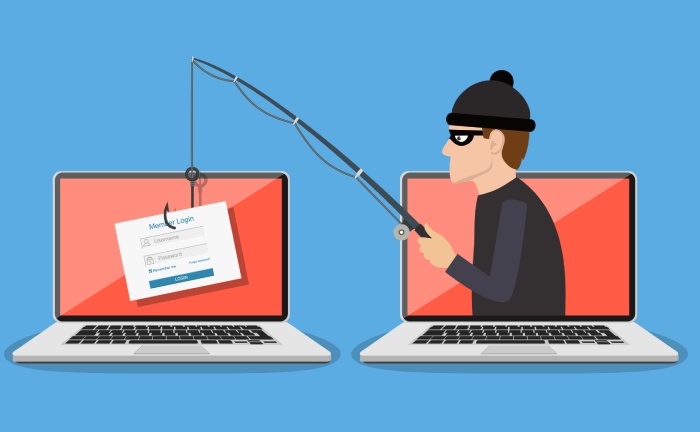Decoding I-Tag DKIM Vulnerability and Its Impact on Email Deliverability and Security

If you thought that authentication standards like Domain-based Message Authentication, Reporting, and Conformance (DMARC) and Brand Indicators for Message Identification (BIMI) were enough to maintain the integrity of your email communication, you are probably mistaken! According to a recent report published by Estonian security researchers, there exists a significant flaw in the DomainKeys Identified Mail (DKIM) protocol that can seriously throw off all email security efforts.
The flaw we are talking about is the usage of the “I=” tag. Although security professionals have been discouraging the use of this tag for almost a decade now, some brands continue to use it, leaving their email systems vulnerable.
Let’s take a look at what the deal is with this vulnerability and how it can impact your deliverability and security. In this article, we will also uncover the ways to mitigate the risks associated with this DKIM vulnerability.
What Exactly is I-Tag DKIM Vulnerability?
As you already know, DKIM is an authentication protocol that relies on signatures to verify the legitimacy of email messages. These signatures include cryptographic hashes that can be added to the email’s header and body to ensure that the message hasn’t been tampered with along the way. But once you implement the “I=” tag in DKIM, you can specify the portion of the email body that is to be hashed. While this kind of customization might seem really beneficial, especially when sending emails to mailing lists, it is the major loophole that can open the doors to cyber attackers.
Let’s explain how:
Suppose you use the “I= tag” to hash only the first 1,000 characters of your email. When an attacker intercepts the email, they will definitely be able to vandalize your message content after those 1,000 characters and send it to your clients. Although the DKIM signature covers only some portion of the message, the altered email will pass DKIM verification. Now, imagine that the altered email containing malicious content reaches the recipient; it is going to affect your brand reputation, compromise security, and expose recipients to phishing or other attacks.
How is the I-Tag a Threat to Email Security?
Since the I-Tag allows you to partially hash the email body, the section that is left unhashed is susceptible to being manipulated. This might seem like a small loophole, but it can be targeted by cyber attackers to achieve their nefarious intentions. What’s worse is that despite these alterations, the email will still pass DKIM verification and appear legitimate to the receivers.

Here’s how this simple configuration can topple all security efforts and pave the way for phishing attacks and spam:
Increased Phishing Attacks and Spam
As you know, threat actors never leave a chance to exploit vulnerabilities, and the l-Tag in DKIM is no exception. The minute these perpetrators realize that the email is only partially hashed, they unleash their malicious side and go on to manipulate the content beyond the hashed portion by incorporating hostile links, misleading information, or harmful attachments, all while bypassing spam filters. As a result, this increases the chances of phishing or malware attacks as the tampered emails pass DKIM verification and seem to come from trusted sources.
Enlarged Attack Surface
The problem with I-Tag in DKIM is that it only hashes a portion of the email body which then leaves us with a vulnerable segment that can be exploited by the attackers. This not only makes it easier for attackers to manipulate emails but also challenges the effectiveness of traditional security measures, thereby increasing the risk of successful breaches and compromising overall email security.
Compromise BIMI Integrity
Displaying your brand’s logo in the recipients’ inboxes along with the email messages is a great way to reinforce legitimacy and trust among your audiences. However, with the I-Tag in DKIM, this trust can turn into deception. With this configuration, the attackers can manipulate the unhashed portion of the email body, forge messages, and send them to BIMI-supporting inbox providers. After all, it is very easy to pass these fraudulent emails straight into the recipient’s inbox under the garb of legitimacy.
Compliance and Regulatory Risks
Apart from being a major security risk, the I-Tag in DKIM can pose significant compliance and regulatory risks. With data protection laws like GDPR and HIPAA getting ever so detailed and complex, you could be in serious legal trouble if tampered emails lead to data breaches or unauthorized access to sensitive information. Imagine the kind of legal and financial trouble you might find yourself in if such incidents occur!
How Does I-Tag in DKIM Impact Email Deliverability?
I-Tag is not a security threat but can also bring down your email deliverability. Here are some of the risks that you should be wary of:
Damage Brand Reputation
If in case a bad actor gets hold of your messages, they can easily manipulate the unhashed part and send it across to the intended recipient. This will not only put your clients at risk of phishing attacks but also tarnish your brand’s reputation. As soon as the recipients or their email services identify these messages as malicious or report them as spam, your emails might start being automatically filtered into spam folders, thereby bringing down the effectiveness of your communications.
Reduced Engagement
It goes without saying, of course, that if the emails from your brand are consistently landing in the spam folder, the level of engagement will see a downward turn. This drop in engagement is significant in cases like the exploitation of the DKIM “I=” tag vulnerability, where the altered message can be marked as spam or ignored. This will eventually bring down your campaign metrics and impact the way your customers perceive and interact with your brand.
Increased Bounce Rates
Another big problem that can pop up due to the DKIM “I=” tag vulnerability is higher bounce rates. The thing is, when your emails are often marked as spam, internet service providers (ISPs) might start bouncing them, which means instead of making it to people’s inboxes, these emails are sent back.

Should You Never Use the l-Tag?
If using l-Tag in DKIM is so bad, why is it a critical aspect of an email authentication policy? Does this mean you should absolutely steer clear of the l-Tag to avoid email security and deliverability pitfalls?
Let us dig deeper and answer these pertinent questions:
Like any other configuration with l-tag in DKIM, you have to be careful because it has some security risks associated with it. Considering how the cons outweigh the pros, it’s generally advised to avoid using the l-tag in your DKIM signature, especially if you’re managing email systems or platforms. Moreover, if the ISPs spot any discrepancies because of the l-tag vulnerability, they may start to distrust and even reject emails coming from your domain.
Nonetheless, if you think there will be cases where legitimate changes need to be made to emails while in transit (such as passing through mailing lists), then you may consider using l-tag in your DKIM signature.
It is essentially a tug-of-war between flexibility and security, and the choice is yours to make. But before you do so, weigh the pros, cons, and potential risks
How Can You Prevent Attackers From Taking Advantage of the Vulnerability?
If you are looking for a foolproof way to mitigate the risks associated with the DKIM I-Tag vulnerability, the only way is to avoid the tag altogether. By doing this, you will ensure that the entire email content is signed and authenticated and that there is no scope for an attacker to manipulate the message.
You can bring down the risk of unsolicited modification by keeping your DKIM key far from the reach of the threat actors. A good way to go about it is by regularly rotating DKIM keys. Doing this ensures that even if an older key is compromised, it can no longer be used to authenticate emails falsely.
Furthermore, if you rely on mailing lists or any third-party platforms for your email communications, make sure that you regularly review them and manage the permissions you grant them. While you are at it, you should also implement stringent security measures and conduct regular audits to ensure that all systems are secure and up-to-date.
It is also important to remember that email security is not contingent on a single authentication protocol; rather, it relies on a comprehensive, layered approach. That is to say, alongside DKIM, make sure that you employ other protocols such as SPF (Sender Policy Framework) and DMARC (Domain-based Message Authentication, Reporting, and Conformance), which together provide a robust defense against email spoofing and phishing attacks.
If you’re struggling with email authentication or need comprehensive reports and insights into your DMARC deployment practices, DMARC Report is the place to be! Whether it is analyzing the performance of your email authentication protocols or identifying vulnerabilities, we are here to help you every step of the way. With our team of experts, you can rest assured that your digital assets are in safe hands. To know everything about our services, get in touch with us today!







